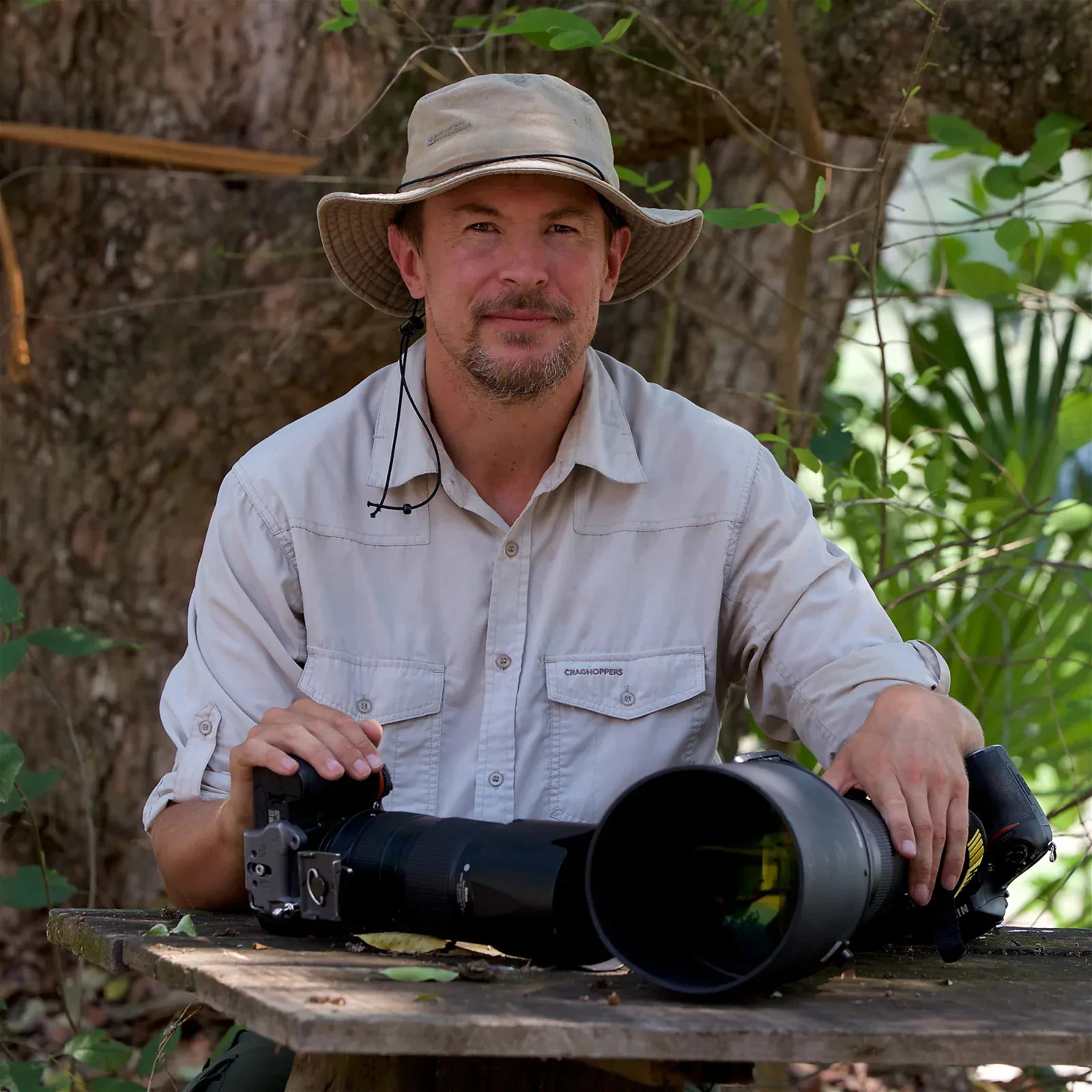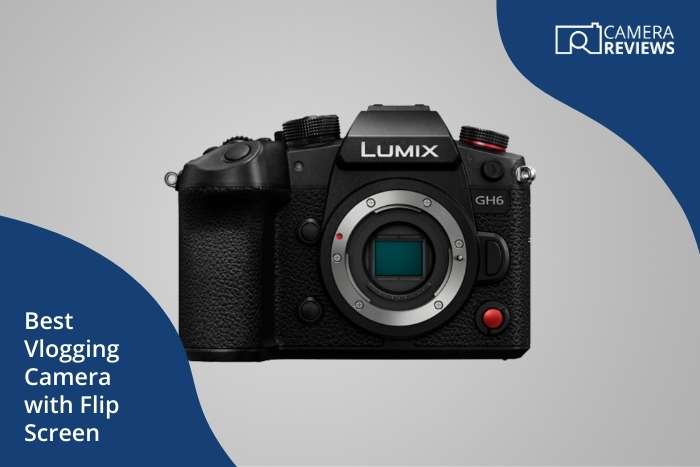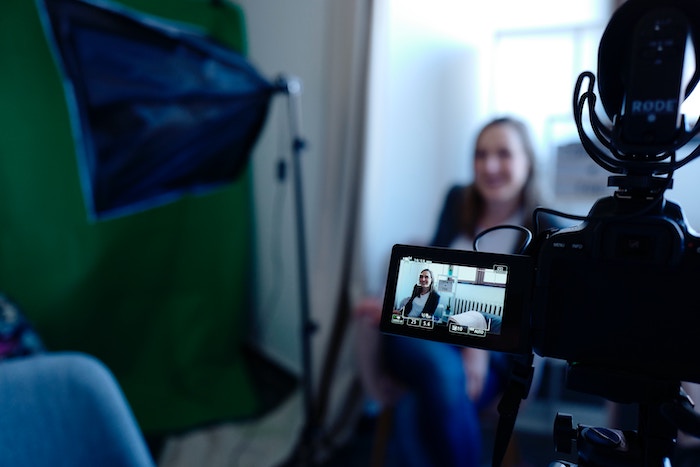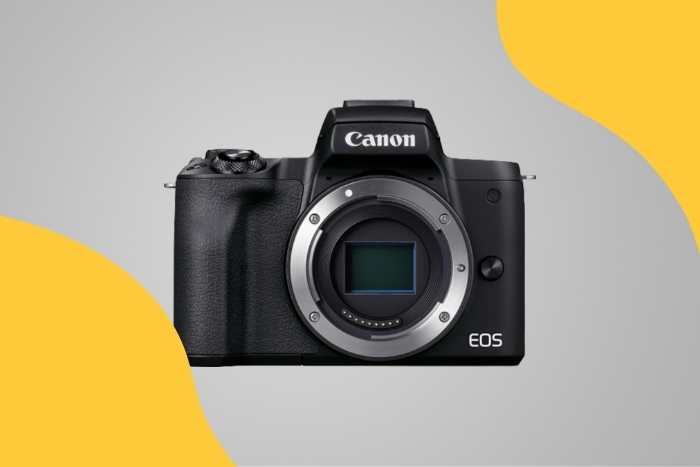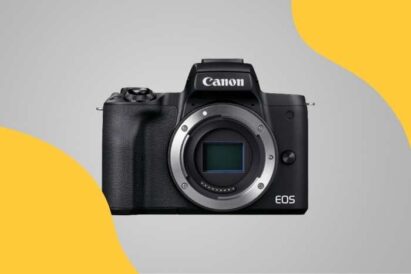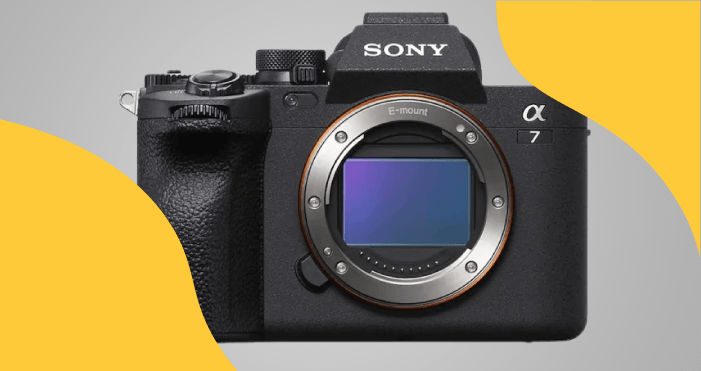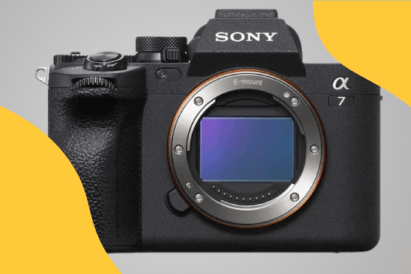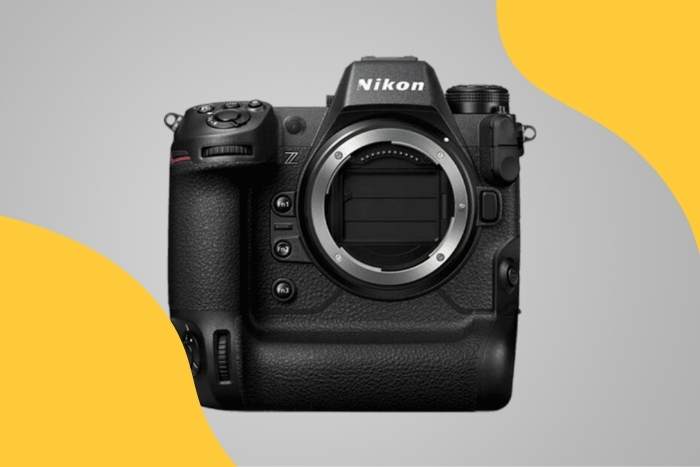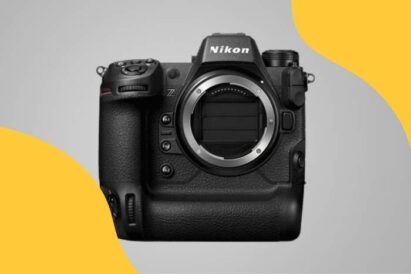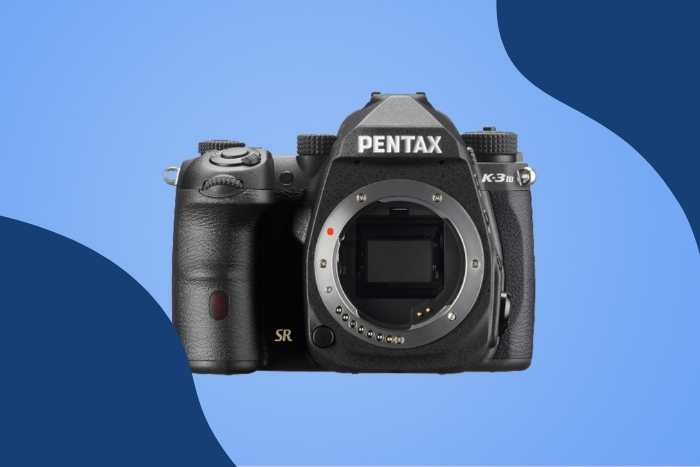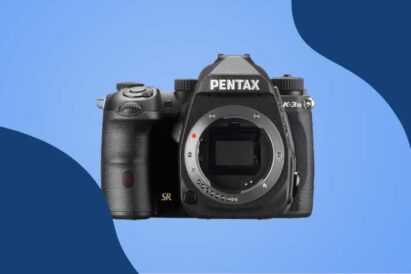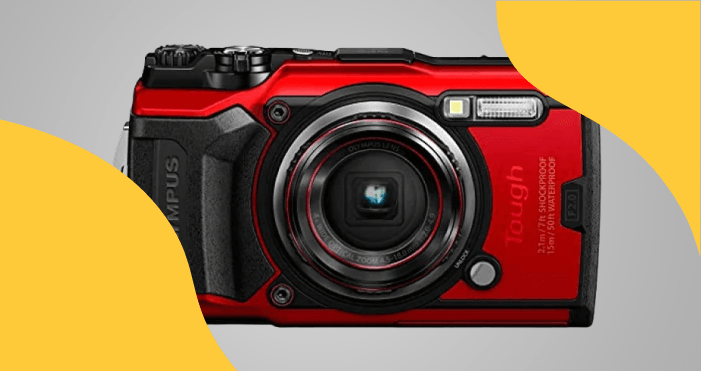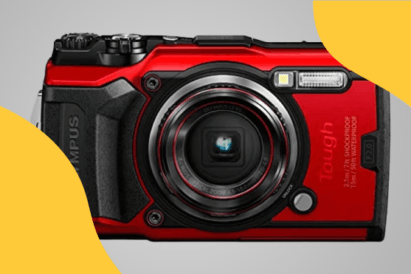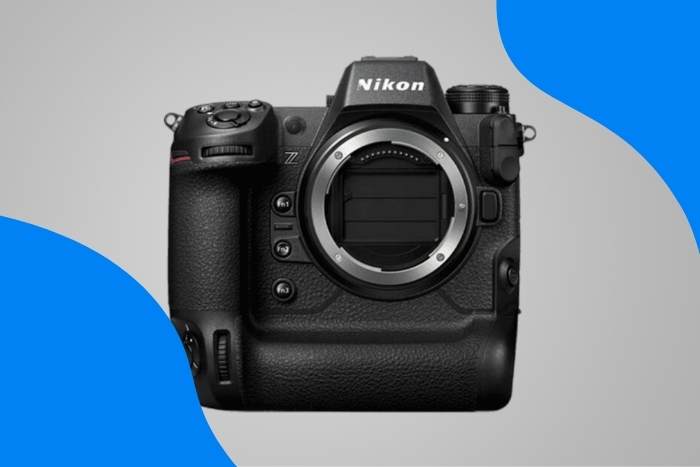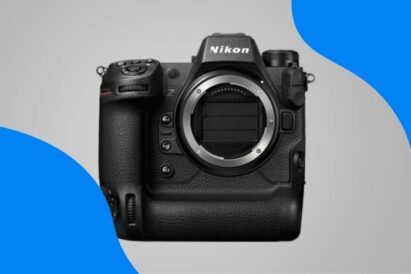A wide range of cameras are available if you’re looking for a vlogging camera with a flip screen. These range from point-and-shoot to Micro Four Thirds, APS-C, and full frame mirrorless models.
We’ll first review what to look for in the vlogging camera with a flip screen. And then, we’ll get into our 12 picks that cover several camera brands known for fantastic video features.
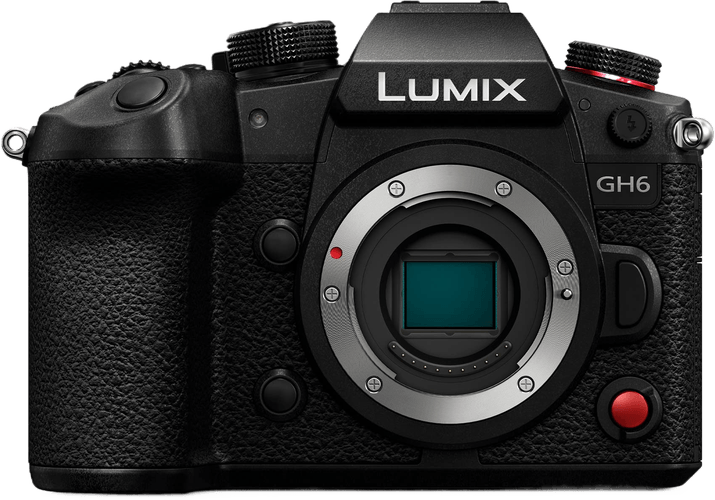
Panasonic Lumix DC-GH6
What Is the Best Vlogging Camera with Flip Screen?
Here are the camera features you need to consider to narrow down the best options.
First of all, let’s talk about the screen. It should be fully articulating, front-facing, or a flip-up screen. All the cameras on our list have something similar.
If the screen tilts down, you won’t be able to use a tripod! It also helps if it’s a camera with a touch screen. And a digital overlay will make it easier to choose your settings.
After that, the video features are the most important for vlogging cameras. These include video quality, recording limits, and tools like zebra stripes.
A good internal microphone also helps. But serious vloggers will prefer external mic and headphone sockets.
In-Body Image Stabilization (IBIS) is useful if you’re often on the move. An AF system with eye detection and tracking is also handy—especially if it lets you choose which eye to focus on!
Finally, battery life, size, and weight must be acceptable. And the price has to match your budget! So let’s first look at the main options for a vlogging camera with a flip screen.

- 5.8K max video resolution
- Unlimited recording time as built-in fan prevents overheating
- Sensor-shift image stabilization
- Dual memory-card slots
- Weather-sealed body
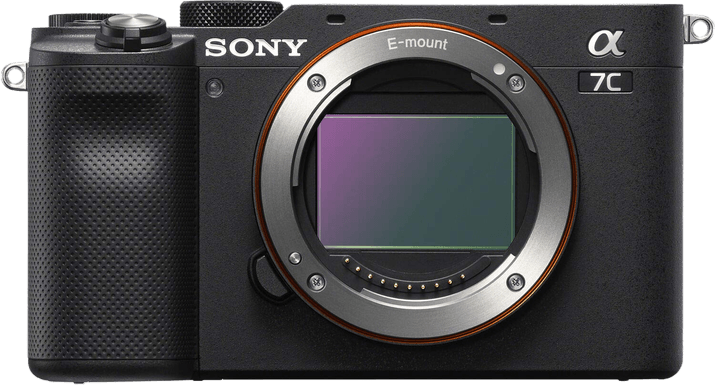
- Tiny, portable full frame body
- Excellent autofocus system
- Good battery life
- Weatherproof magnesium alloy body
- Option of bundling a lightweight 28-60 mm zoom lens kit
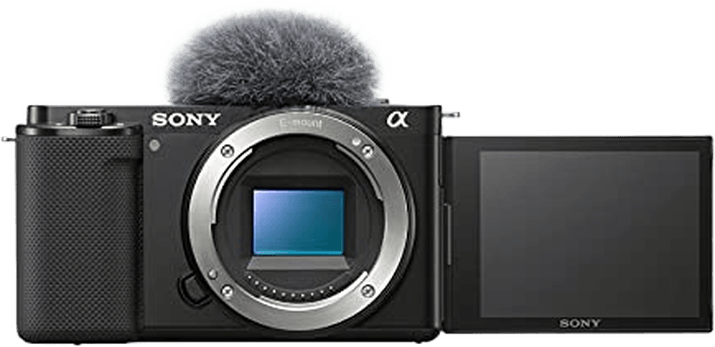
- Top-end autofocus system that's great with photo and video
- No time limit on video recording
- Fully articulating screen and selfie modes
- External microphones and headphones ports
- Compact and lightweight camera body
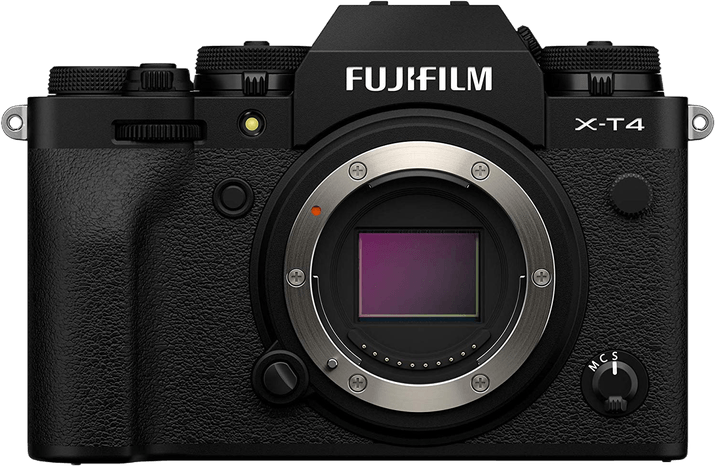
- Decent APS-C BSI-CMOS sensor
- A great frame rate of 15 fps
- 6.5 stops of image stabilization
- 4K video (DCI or Ultra HD) up to 60 fps
- A fully articulating rear touchscreen
- 12 Film Simulation modes
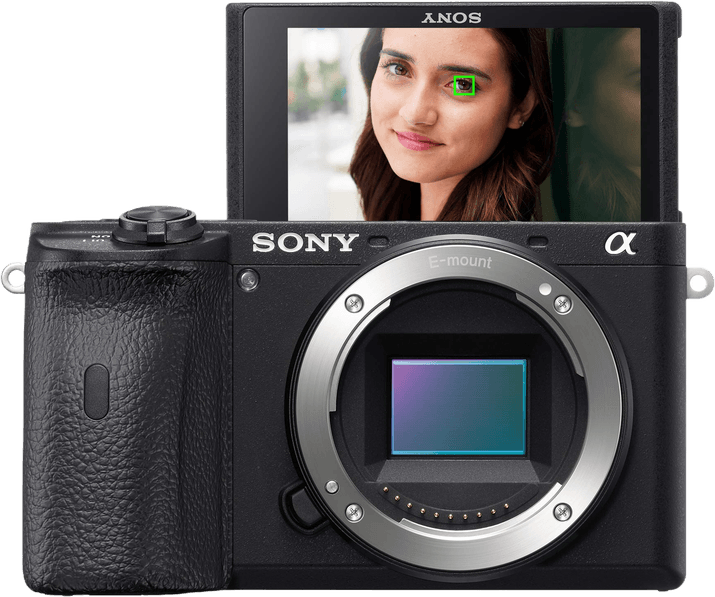
- Astonishing autofocus
- 5-axis in-body image stabilization reduces camera shake
- Silent shooting
- Terrific battery life
- Small, lightweight camera
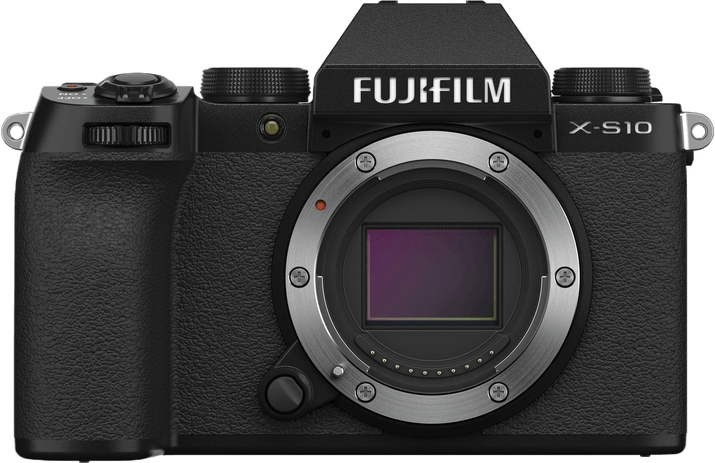
- Stunning image quality
- Good ergonomics
- 5-axis in-body stabilization
- 30 fps with crop or 20 fps without
- 4K Ultra HD with good dynamic range
- Wi-Fi and Bluetooth connectivity
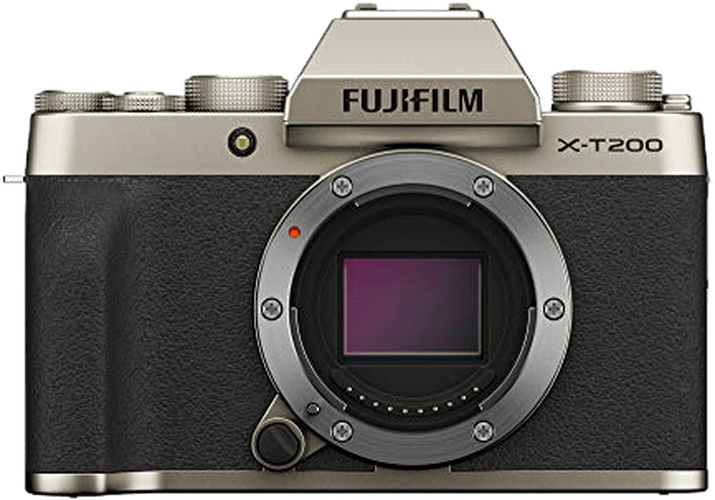
- Great image detail with little noise
- Good colors in JPEGs
- Helpful face and eye detection
- Large, bright touchscreen LCD
- Mic and headphone sockets
- High-quality, 4K Ultra HD video
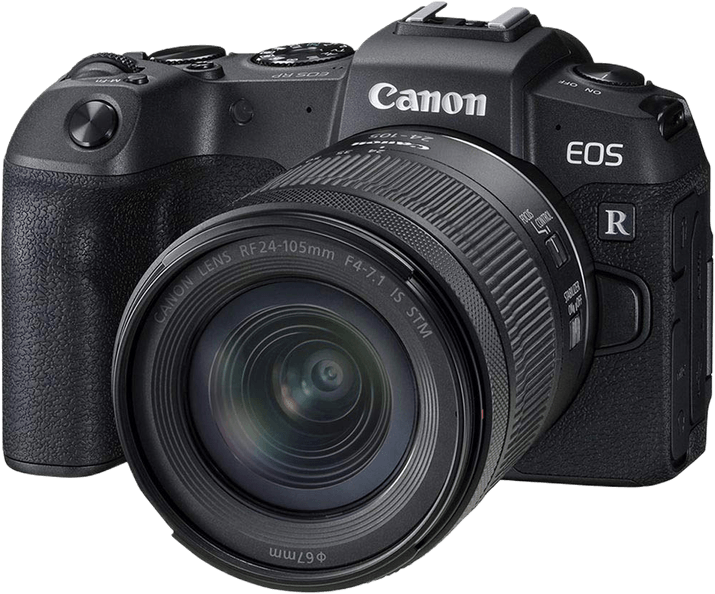
- Affordable full-frame mirrorless
- Lightweight and easy to handle
- Macro stacking and time-lapse
- Convenient Wi-Fi and Bluetooth
- Nice 4K video performance
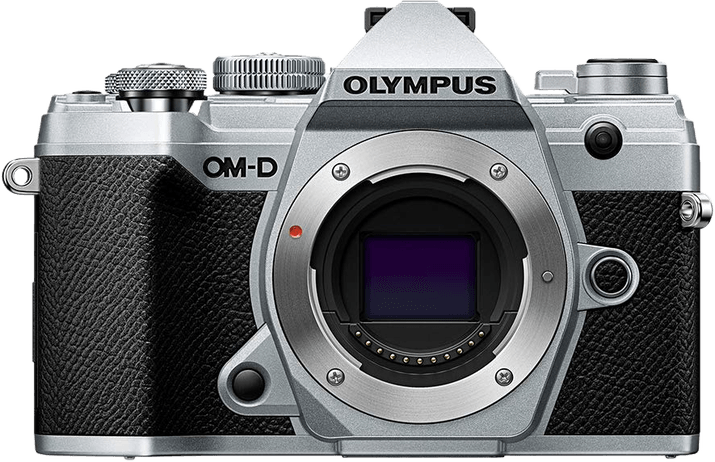
- 50 MP High Res Shot mode
- 30 fps continuous shooting speed
- Up to 6.5 stops of in-body stabilization with certain lenses
- Excellent weather sealing
- Articulating screen for angled shots
- Excellent 4K Ultra HD and DCI video
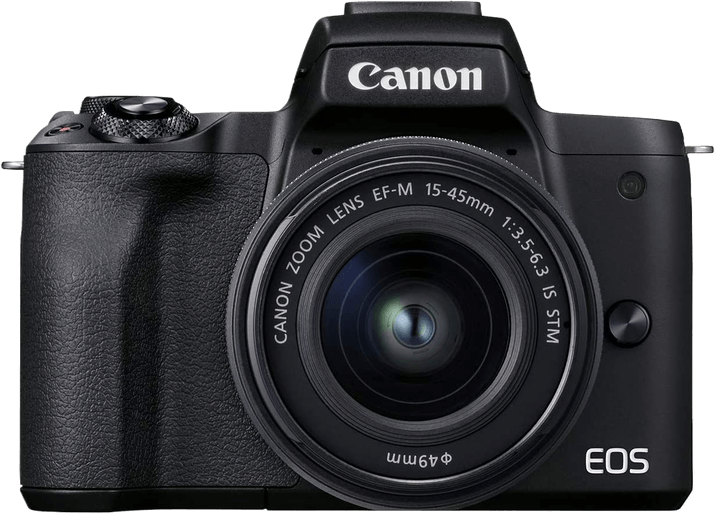
- Strong sensor resolution
- 4K and Full HD video options
- Time-lapse recording
- External mic port
- Webcam functionality
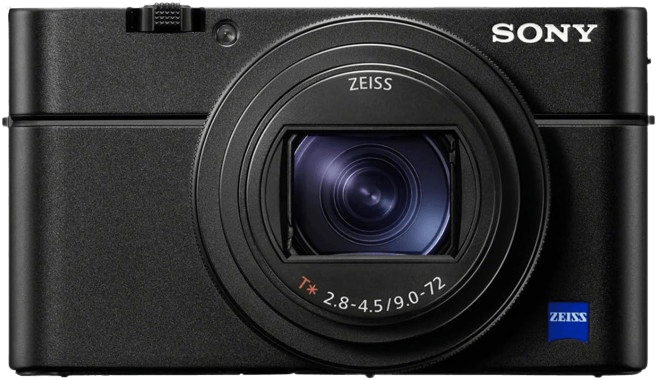
- Pocket-sized point-and-shoot
- High-quality Zeiss zoom lens with 8x zoom
- Advanced autofocus system with subject tracking
- Excellent 4K video performance
- Microphone jack for audio recording
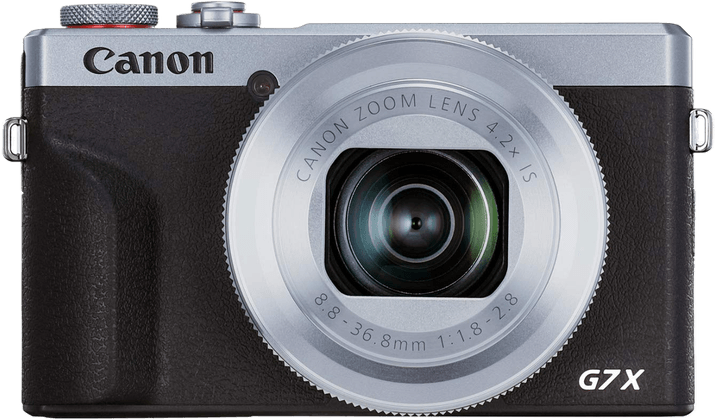
- A high dynamic range
- Fast continuous shooting speeds
- Stylish design
- Pocket-sized body
- Flip-up rear LCD touchscreen
- Live-streaming compatible
12 Best Vlogging Cameras with Flip Screens in Detail
Now let’s cover each of the main options for a vlogging camera with a flip screen in more detail.
You can jump to our FAQ section at the end for answers to the most common questions we get about vlogging cameras with flip screens.
1. Panasonic Lumix GH6

| Camera Type |
Camera Type
|
| Megapixels |
Megapixels
25 MP |
| Sensor Format |
Sensor Format
|
| Sensor Size |
Sensor Size
17.3 x 13 mm
|
| Frame Rate |
Frame Rate
14 fps |
| Autofocus Points |
Autofocus Points
315 |
- 5.8K max video resolution
- Unlimited recording time as built-in fan prevents overheating
- Sensor-shift image stabilization
- Dual memory-card slots
- Weather-sealed body
- Fairly expensive camera
- AF system lags behind other brands
- Mediocre low-light performance
- Large and heavy body isn't always comfortable to handle
- Battery life could be better
The Panasonic Lumix GH6 is a Micro Four Thirds camera capable of taking sharp photos and videos. It has a sturdy build and a user-friendly design, making it easy for even beginners to use.
One of the features of the GH6 is its 20.3 MP (megapixel) sensor, which allows for clear, detailed images. It also has a fast autofocus (AF) system to keep your photos and videos sharp.
If eyes are detected inside the focus area, eye detection comes into operation. And the camera can spot the faces of up to 15 individuals.
This mirrorless camera can also shoot 4K and 6K video, with a high frame rate for slow-motion footage and a wide range of internal recording options.
Its advanced IBIS helps prevent shaky footage (especially with Dual IS 2 lenses). And zebra stripes help avoid overexposing parts of the frame.
Plus, you can always switch to Boost IS mode for static shots. This all makes it an excellent choice for videographers.
Another great feature of this camera is its low-light performance. It has a high maximum ISO of 25,600. So you can still get clear, bright photos and videos even in dimly lit environments.
But you need to use Dynamic Range Boost to get the best out of it. That has a base ISO of 2,000. So you might have to use an ND filterin bright sunshine!
This Panasonic camera also offers a range of custom settings. This lets you fine-tune your photos and videos to your liking.
And with its large, high-res electronic viewfinder (EVF), you can easily compose your shots and preview your images. So the Lumix GH6 is an excellent vlogging camera.
It offers a range of advanced features and is still easy to use. Whether you’re a beginner or not, this camera captures stunning visuals—if you don’t mind an average battery life.
2. Sony a7C

| Camera Type |
Camera Type
|
| Megapixels |
Megapixels
24.2 MP |
| Sensor Format |
Sensor Format
|
| Sensor Size |
Sensor Size
23.8 x 35.6 mm
|
| Frame Rate |
Frame Rate
10 fps |
| Autofocus Points |
Autofocus Points
693 |
- Tiny, portable full frame body
- Excellent autofocus system
- Good battery life
- Weatherproof magnesium alloy body
- Option of bundling a lightweight 28-60 mm zoom lens kit
- Only two customizable buttons
- Small electronic viewfinder
- No touchscreen menus
- Only has one memory card slot
The Sony a7C camera is a compact, lightweight full frame mirrorless camera. It is a great vlogging camera for people looking for a high-quality model that’s easy to use and carry around.
One of its features is its 24.2 MP sensor, which allows for clear and detailed images.
And like most Sony cameras, it also has a fast AF system with face and eye detection to ensure your photos and videos are in focus.
The video specs could be more impressive. But this Sony camera can still shoot 4K, which is great for creating high-quality content.
It also has a range of custom settings, including the zebra pattern function, letting you fine-tune your photos and videos to your liking.
Another great feature is its IBIS, which helps prevent camera shake. This is especially useful when shooting handheld, and it boosts low-light performance.
And this mirrorless camera also has a flip-out touchscreen to help you compose shots and preview images more easily. This is helpful for people who want to take selfies or vlogs.
The a7C is a small, light camera with many customizable settings. This Sony option is worth considering if you want a portable vlogging camera with a flip screen.
3. Sony ZV-E10

| Camera Type |
Camera Type
|
| Megapixels |
Megapixels
24 MP |
| Sensor Format |
Sensor Format
|
| Sensor Size |
Sensor Size
23.5 x 15.6 mm
|
| Frame Rate |
Frame Rate
11 fps |
| Autofocus Points |
Autofocus Points
425 |
- Top-end autofocus system that's great with photo and video
- No time limit on video recording
- Fully articulating screen and selfie modes
- External microphones and headphones ports
- Compact and lightweight camera body
- No sensor-shift stabilization, only a shake reduction system
- Visible rolling shutter effect with tracking shots
- The lack of a viewfinder is disappointing
- 4K video is cropped at 30 fps
The Sony ZV-E10 is an affordable APS-C mirrorless camera with a flip screen that can take high-quality photos and videos. It’s designed for content creators who want to share their experiences with others.
Its 24.2 MP sensor offers sharp, detailed images. It also has a fast autofocus system with real-time tracking and eye detection.
This mirrorless is capable of 4K video—which is essential for creating high-quality content. And it also has a range of custom settings, such as zebra stripes, to fine-tune your workflow.
There’s no IBIS system, which would’ve been useful when shooting handheld or in low-light conditions. But a clip-on muffler to cut down wind noise is a handy accessory.
The ZV-E10 is a good camera choice for vloggers and content creators. It offers advanced features, 4K video, and custom settings without being too heavy.
This Sony is worth considering if you’re looking for a good-value vlogging camera. But if you prefer a point-and-shoot with similar performance, you could always look at the Sony ZV-1.
You can compare the ZV-E10 and the ZV-1 to see which suits you better. Or, see how it fares against some of it’s competitors:
- Nikon Z30 vs Sony ZV-E10
- Fujifilm X-S10 vs Sony ZV-E10
- Canon EOS R50 vs Sony ZV-E10
- Canon EOS M50 vs Sony ZV-E10
4. Fujifilm X-T4

| Camera Type |
Camera Type
|
| Megapixels |
Megapixels
26 MP |
| Sensor Format |
Sensor Format
|
| Sensor Size |
Sensor Size
23.5 x 15.6 mm
|
| Frame Rate |
Frame Rate
20 fps |
| Autofocus Points |
Autofocus Points
425 |
- Decent APS-C BSI-CMOS sensor
- A great frame rate of 15 fps
- 6.5 stops of image stabilization
- 4K video (DCI or Ultra HD) up to 60 fps
- A fully articulating rear touchscreen
- 12 Film Simulation modes
- Expensive for an APS-C camera
- Autofocus speed and accuracy depends on the lens and the subject
- Unreliable face and eye detection
- No external battery charger provided
- Limited video recording time
- No subject tracking in video mode
The Fujifilm X-T4 is the flagship APS-C mirrorless camera for YouTubers who want to create video footage. It’s a powerful camera with advanced technology to take your channel to the next level.
This Fujifilm mirrorless has a 26.1 MP sensor that produces sharp, detailed images. Its advanced features and sleek design make it a good-looking, professional option.
It also has a fast AF system with face and eye detection to keep your videos in focus. But it’s prone to false positives!
The camera does offer better video features than the Fujifilm X-S10. It has a webcam function and a maximum bit rate of 400 Mbps rather than 200 Mbps.
It’s also capable of 4K video with 60 fps 10-bit internal recording. Plus, it has useful tools such as zebra stripes.
It has a 6.5-stop IBIS system that helps prevent camera shake if you’re a “run-and-gun” filmmaker. And while there’s no headphone socket, you can always buy an adaptor.
The camera has a flip-out touchscreen—great for YouTubers who want to see themselves while filming. And it has a mic input to connect an external mic for better sound quality.
It also has long battery life—one of the longest among mirrorless models. So you can film for extended periods without worrying about running out of power.
Plus, this Fujifilm camera has a stylish and rugged build that’s durable but lightweight. So it’s easy to carry around and use for extended periods.
Overall, the X-T4 is easy to use and produces great results. But still photographers might like a deeper buffer in burst mode.
See how the X-T4 stands up against the following models:
- Canon EOS R7 vs Fujifilm X-T4
- Fujifilm X-T4 vs X100V
- Canon EOS R6 vs Fujifilm X-T4
- Fujifilm X-T4 vs Nikon Z5
- Fujifilm X-T4 vs Sony a7C
5. Sony a6600

| Camera Type |
Camera Type
|
| Megapixels |
Megapixels
24.2 MP |
| Sensor Format |
Sensor Format
|
| Sensor Size |
Sensor Size
15.6 x 23.5 mm
|
| Frame Rate |
Frame Rate
11 fps |
| Autofocus Points |
Autofocus Points
425 |
- Astonishing autofocus
- 5-axis in-body image stabilization reduces camera shake
- Silent shooting
- Terrific battery life
- Small, lightweight camera
- Slow buffer speeds
- Controls feel cramped with large hands
- Limited touchscreen controls
- No pop-up flash
- Rolling shutter recording video
The Sony a6600 is an APS-C mirrorless camera that’s a perfect tool for vloggers.
It’s very powerful. And the battery life, IBIS system, and low-light performance make for hassle-free shooting… especially outdoors.
One of the stand-out features is its autofocus system. It boasts the world’s fastest focus acquisition time of just 0.02 seconds!
The Eye AF’s speed and accuracy mean you can move freely without worrying about losing focus. But if you want to use Real-time Tracking AF, you must manually switch it on.
This is done in the menu by pressing the Function (Fn) button. You have a choice of two modes. Flexible Spot M lets you track manually. And Wide selects the nearest person or object.
The camera’s video specifications aren’t outstanding compared to the competition. And the footage suffers from a noticeable rolling shutter effect.
But the a6600 does offer unlimited 4K video, which is vital for creating premium content. And it has various tools for filmmakers, like zebra stripes.
It also has a headphone jack and a socket for an external mic for better sound recording. Plus, it has a five-stop IBIS system to help prevent shaky footage—ideal for vloggers on the go.
Another great feature is its battery life. It is one of the longest for mirrorless at 720 shots or 150 minutes of video. So you can film for long periods without worrying about running out of juice.
The camera also has a flip-out touchscreen. This is perfect for vloggers who want to see themselves while filming.
And it has a compact and lightweight design. So it’s easy to carry around and use for extended periods.
Overall, the a6600 is an excellent choice for vloggers. If you don’t mind the rangefinder styling, its advanced features and ease of use make it a powerful tool.
If you’re on a budget, the a6400 is similar and cheaper. But it doesn’t have IBIS, a headphone jack, or video eye tracking. And it has slightly poorer battery life and low-light performance.
You can compare the specs of the a6600 and the a6400. Or, see how it compares with these competing brands:
- Fujifilm X-T3 vs Sony a6600
- Canon EOS M6 Mark II vs Sony a6600
- Canon EOS R10 vs Sony a6600
- Nikon Z5 vs Sony a6600
- Canon EOS R50 vs Sony a6600
6. Fujifilm X-S10

| Camera Type |
Camera Type
|
| Megapixels |
Megapixels
26 MP |
| Sensor Format |
Sensor Format
|
| Sensor Size |
Sensor Size
23.5 x 15.6 mm
|
| Frame Rate |
Frame Rate
20 fps |
| Autofocus Points |
Autofocus Points
425 |
- Stunning image quality
- Good ergonomics
- 5-axis in-body stabilization
- 30 fps with crop or 20 fps without
- 4K Ultra HD with good dynamic range
- Wi-Fi and Bluetooth connectivity
- Subject tracking is not good enough for sports or action shots
- Few custom buttons
- Small viewfinder
- Only one UHS-I memory card slot
- Poor 325-shot battery using the LCD
The Fujifilm X-S10 is an APS-C mirrorless camera for those who want to share high-quality pictures and videos. It is a powerful vlogging camera with an advanced design.
The camera also has a 26.1 MP sensor, which creates clear and detailed images. So it helps create great content—especially in the studio, where AF accuracy is less important.
It has a fast autofocus system with 100% phase-detect coverage and Eye AF to keep your photos and videos sharp and clear.
But eye detection has a habit of finding false positives. And it’s only designed for humans, not animals.
This Fujifilm camera is capable of uncropped 4K video. So it’s a great feature for influencers who want to publish footage on social media. But it doesn’t offer 4K/60p like the X-T4.
It has various custom settings to fine-tune your photos and videos. But this doesn’t include zebra stripes, like others on our list.
And it also has an advanced IBIS system to shoot handheld or in low-light conditions. But it’s more effective for stills than video.
This mirrorless has a compact and lightweight build, differentiating it from the X-T4. So it’s easy for influencers always on the go to carry around and use.
Overall, the Fujifilm X-S10 is easy to use and produces great results. And the advanced features and sleek design make it a good choice for anyone looking to create stunning content.
You can check the following comparisons to see which suits your needs better:
7. Fujifilm X-T200

| Camera Type |
Camera Type
|
| Megapixels |
Megapixels
24 MP |
| Sensor Format |
Sensor Format
|
| Sensor Size |
Sensor Size
23.5 x 15.6 mm
|
| Frame Rate |
Frame Rate
8 fps |
| Autofocus Points |
Autofocus Points
425 |
- Great image detail with little noise
- Good colors in JPEGs
- Helpful face and eye detection
- Large, bright touchscreen LCD
- Mic and headphone sockets
- High-quality, 4K Ultra HD video
- Only 8 fps continuous shooting
- Small continuous shooting buffer
- Limited custom options
- Short 270-shot battery life
- No subject tracking shooting video
- Full HD video lacks sharpness
With a large, 3.5-inch touchscreen, the X-T200 APS-C mirrorless camera is a good choice for creative vloggers. It’s a lightweight, easy-to-carry compact, perfect for vlogging on the go!
It has a 24.2 MP sensor that produces sharp and detailed images. But it’s only CMOS rather than the more advanced X-Trans type. So the Bayer array isn’t as good at minimizing moiré.
It does have a fast autofocus system with face and eye detection. So your videos are always in focus.
Plus, it can record 4K video—essential for vloggers wanting high-quality content. And its IBIS reduces camera shake and helps produce smooth, professional-looking videos.
This mirrorless camera has a flip-out touchscreen, which makes it easy to see yourself while filming. So it’s especially useful for vloggers who want to ensure they remain in the frame.
It has a mic input, which lets you connect an external mic for better sound quality. And it has a wide range of custom settings (except zebra stripes). So you can fine-tune photos and videos.
It features the full range of 11 Fujifilm film simulation modes, such as Eterna and Sepia. And it has various creative presets, including the new Clarity filter and 19 other advanced filters.
These let you recreate the look and feel of different film types. And they’re useful for photographers and vloggers who want to easily add a creative touch to their work.
Overall, the X-T200 is a good choice for those who want a light and simple camera. It produces creative, high-quality video and offers custom settings and advanced features. See our Fujifilm X-T100 vs X-T200 or X-A7 vs X-T200 comparisons for more food for thought!
8. Canon EOS RP

| Camera Type |
Camera Type
|
| Megapixels |
Megapixels
26 MP |
| Sensor Format |
Sensor Format
|
| Sensor Size |
Sensor Size
24 x 35.9 mm
|
| Frame Rate |
Frame Rate
5 fps |
| Autofocus Points |
Autofocus Points
4,779 |
- Affordable full-frame mirrorless
- Lightweight and easy to handle
- Macro stacking and time-lapse
- Convenient Wi-Fi and Bluetooth
- Nice 4K video performance
- 5 fps max burst is slow compared to competitors
- Relatively poor 250-shot battery life
- Doesn't function while charging
- 4K video is cropped 1.6x
The Canon EOS RP is an entry-level full frame mirrorless camera that’s excellent for creators. It’s a lightweight and compact model at an affordable price, perfect for vlogging on the go.
It has a 26.2 MP sensor that produces sharp, detailed images. And it can shoot 4K footage—but this is with a 1.6x crop and no Dual Pixel AF.
It also has a fast autofocus system that keeps your videos sharp. And it’s the first Canon camera to offer pupil and eye detection with continuous autofocus (AI Servo).
It also has a wide range of custom settings. So you can fine-tune your photos and videos to your liking. But it doesn’t offer tools such as zebra stripes.
The camera has various creative filters and effects that let you add a unique touch to your videos. This is a great feature for vloggers who want to add personality to their content.
This mirrorless camera also has IBIS to prevent shaky footage and produce smooth, professional videos. And it has a socket that lets you connect an external mic for better audio.
Overall, the EOS RP is a great choice for vloggers. It’s lightweight, easy to use, and produces high-quality video content.
And advanced features and custom settings make it a great content-creation tool—if you don’t mind the poor battery life!
If you’re considering buying the RP, check out these specs comparison before you decide:
- Canon EOS M50 Mark II vs EOS RP
- Canon EOS RP vs Panasonic Lumix DC-G9
- Canon EOS 7D Mark II vs EOS RP
- Canon EOS R6 vs EOS RP
- Canon EOS R50 vs EOS RP
9. Olympus OM-D E-M5 Mark III

| Camera Type |
Camera Type
|
| Megapixels |
Megapixels
20 MP |
| Sensor Format |
Sensor Format
|
| Sensor Size |
Sensor Size
17.4 x 13 mm
|
| Frame Rate |
Frame Rate
30 fps |
| Autofocus Points |
Autofocus Points
121 |
- 50 MP High Res Shot mode
- 30 fps continuous shooting speed
- Up to 6.5 stops of in-body stabilization with certain lenses
- Excellent weather sealing
- Articulating screen for angled shots
- Excellent 4K Ultra HD and DCI video
- Only 10 fps with AF tracking
- Complicated Olympus menus
- No headphone out
- No video log profile for dynamic range or colors
- An average battery life
The Olympus OM-D E-M5 Mark III Micro Four Thirds camera is powerful but compact. It is a lightweight model that’s easy to carry around. So it’s ideal for vlogging on the go.
It has a 20.4 MP sensor that produces sharp, detailed images. It also has a fast, phase-detect autofocus system that keeps your videos in focus.
The camera can produce 4K footage, which is essential for vloggers who want to create high-quality content. But it doesn’t offer any Log options (for a higher dynamic range).
It does have an advanced IBIS system, a microphone port, and video tools such as zebra stripes. But there’s no headphone jack for external audio monitoring.
It has various creative filters and effects to add a unique touch to your stills and videos, including the Live Composite mode. This is fantastic for vloggers who are artistic or like originality.
The E-M5 Mark III is compact and easy. And with advanced features and custom settings, it creates stunning visuals and premium content. But it’s slightly let down by limited battery life.
10. Canon EOS M50 Mark II

| Camera Type |
Camera Type
|
| Megapixels |
Megapixels
24 MP |
| Sensor Format |
Sensor Format
|
| Sensor Size |
Sensor Size
14.9 x 22.3 mm
|
| Frame Rate |
Frame Rate
10 fps |
| Autofocus Points |
Autofocus Points
143 |
- Strong sensor resolution
- 4K and Full HD video options
- Time-lapse recording
- External mic port
- Webcam functionality
- 4K video is cropped
- No environmental sealing
- No sensor-shift image stabilization
- Disappointing battery life
The EOS M50 Mark II (Kiss M2) APS-C mirrorless is a high-quality, affordable camera. It’s easy to use and produces great results if you don’t need to record 4K videos.
Plus, it is lightweight and compact. So it’s perfect for vlogging on the go.
One of its features is its 24.1 MP APS-C sensor, which produces sharp and detailed images. It also has a fast autofocus system with face detection that keeps your videos sharp.
You can shoot 1080p Full HD video. And it’s backed up by IBIS and video tools such as vertical shooting, YouTube live streaming, and zebra stripes.
These will appeal to vloggers who want to create high-quality content. But rolling shutter is a problem.
And its 4K video is heavily cropped and doesn’t have Dual Pixel AF. So you have to rely on slower and less reliable contrast-detect AF.
The mirrorless also has a wide range of custom settings. So you can fine-tune your photos and videos to your liking. And it has an input to connect an external mic for better audio quality.
Plus, the camera also has a variety of creative filters and effects to add a unique touch to your videos. So it’s great for vloggers who want to show more of their personality.
The M50 Mark II is a lightweight, easy-to-use camera that produces high-quality video. The advanced features and custom settings make it a fine tool for vloggers and content creators.
11. Sony Cyber-shot DSC-RX100 VII

| Camera Type |
Camera Type
|
| Megapixels |
Megapixels
20 MP |
| Sensor Format |
Sensor Format
|
| Sensor Size |
Sensor Size
13.2 x 8.8 mm
|
| Frame Rate |
Frame Rate
5 fps |
| Autofocus Points |
Autofocus Points
357 |
- Pocket-sized point-and-shoot
- High-quality Zeiss zoom lens with 8x zoom
- Advanced autofocus system with subject tracking
- Excellent 4K video performance
- Microphone jack for audio recording
- Very expensive
- Image quality isn't great
- Not the best low-light performance
- No microphone jack
- No headphone jack
The Sony Cyber-shot DSC-RX100 VII compact camera is an excellent choice for bloggers—if you have the budget!
It is a lightweight camera with a fixed 24-200mm equivalent lens. And it can easily fit in your pocket or purse, making it perfect for vlogging on the go.
The RX100 VII has a 20.1 MP one-inch sensor, which produces sharp and detailed images. It also offers a 20 fps burst rate that rises to 90 fps in the short Single Burst shooting mode.
It also has a fast AF system (comparable to the a9) with human and animal eye detection to keep videos sharp. And it’s the first RX camera that can detect and track people’s eyes while filming.
The camera can shoot 4K video with IBIS and tools such as zebra stripes. It also has a microphone input to connect an external mic for better audio quality.
Another great feature is the wide range of creative filters and effects to let you add a personal touch to your videos. This is a great feature for vloggers who want to create unique content.
The Cyber-shot DSC-RX100 VII is a compact camera with many advanced features and custom settings. But its EVF, small controls, and slippery finish make it a little bit fiddly to use.
12. Canon PowerShot G7 X Mark III

| Camera Type |
Camera Type
|
| Megapixels |
Megapixels
20 MP |
| Sensor Format |
Sensor Format
|
| Sensor Size |
Sensor Size
13.2 x 8.8 mm
|
| Frame Rate |
Frame Rate
30 fps |
| Autofocus Points |
Autofocus Points
31 |
- A high dynamic range
- Fast continuous shooting speeds
- Stylish design
- Pocket-sized body
- Flip-up rear LCD touchscreen
- Live-streaming compatible
- Soft focus at wider focal lengths
- No subject tracking in continuous shooting mode
- No electronic viewfinder
- Weak battery life for a compact
- 10 minute 4K recording limit
The G7 X Mark III is great for YouTubers who want to avoid the complexity of a larger camera. Its compact design and advanced features make it easy to use and perfect for new vloggers.
Its 20.1 MP one-inch sensor produces sharp and detailed images. It also has a fast AF system that ensures that your videos remain in focus.
And the RAW burst rate of 30 fps is exceptional. But it drops to 8 fps with the AF system engaged. Plus, it’s a little expensive for a compact camera with no eye-level viewfinder.
It can shoot uncropped 4K video with IBIS and can live stream. This is ideal for YouTubers who want to create high-quality content. But it does sometimes have problems with overheating.
Another great feature is its Wi-Fi and Bluetooth connectivity. These let you transfer photos and videos to a smartphone or computer. So it’s easy to edit and share content with followers.
Overall, the Canon G7 X Mark III is a great choice for vloggers who want a compact, easy-to-use camera. It has advanced features and custom settings to create stunning online content.
Our Verdict
Screen and video recording options are vital in choosing between the best vlogging cameras with flip screens. Beyond that, it depends on what you will use it for.
If you’re often out and about in all conditions, you might want to look for weatherproofing, eye tracking, good battery life, and an IBIS system.
If you generally stick to studio work on a tripod, you might be more interested in low-light performance. And you don’t have to worry about a recording limit.
Whatever your requirements, you should find the best vlogging camera somewhere on our list. You also can check out our lists of the best Sony cameras and Canon cameras for vlogging.

Panasonic Lumix DC-GH6
Vlogging Camera with Flip Screen FAQs
We get asked these questions most. And we hope our answers help you in your buying decisions.
Do You Need a Flip Screen for Vlogging?
Flip screens aren’t absolutely necessary on the best vlogging cameras. But they can be very useful. It lets you see yourself while filming to ensure you are always in the frame and focused.
It can also make adjusting your lighting and composition easier as you film.
What Vlog Camera Do Most YouTubers Use?
There is no single camera for vlogging that most YouTubers use, as it depends on their preferences and needs.
But popular vlogging cameras include the Canon EOS M50 Mark II, Sony ZV-1, Sony a6400, and Fujifilm X-T4.
Which Camera Is Best for a Beginner Vlogger?
The Canon PowerShot G7 X Mark III is a great choice for a beginner vlogger as it is compact, easy to use, and produces high-quality video content.
Other good vlogging cameras include the Sony ZV-E10, Fujifilm X-S10, and the EOS M50 Mark II. These all have user-friendly features and are relatively affordable.
Check out our guides on choosing the best camera for Instagram, best camera for podcasting, or the best camera for skateboarding next!

